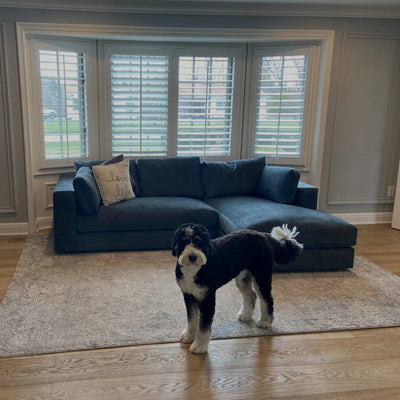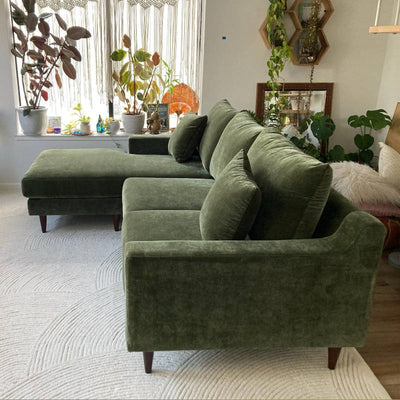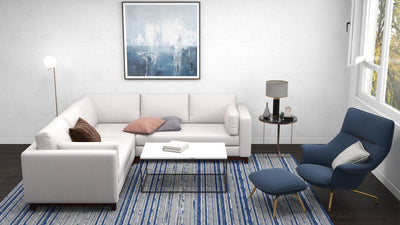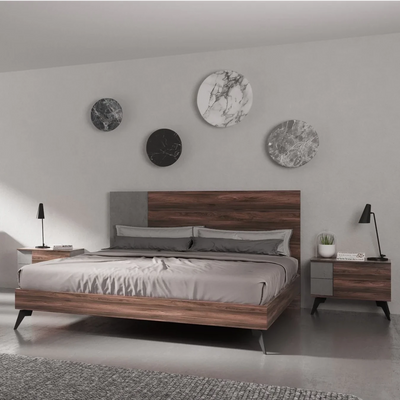When it comes to comfort and durability, your seat cushions are just as important as the sofa frame or fabric. The right cushions can make the difference between a couch that sags within a few years and one that feels supportive and inviting for a decade or more.
In this guide, we’ll walk you through the different types of couch seat cushions, how to choose the right foam density and wrapping, and the best options for families, pets, and everyday use.
Why Seat Cushions Matter
Your sofa’s cushions are the most used part of your couch. A well-constructed seat cushion supports posture, maintains its shape, and keeps your sofa looking fresh. Poorly chosen cushions, on the other hand, flatten quickly and can even cause back discomfort.
Foam Density: The Key to Comfort & Longevity
Foam density is one of the biggest factors in cushion quality. Contrary to common belief, density doesn’t mean firmness, it refers to how much material is packed into the foam.
Low-density foam (1.5–1.8 lb): Affordable but prone to sagging within 2–3 years.
Medium-density foam (2.0–2.2 lb): Good balance of comfort and cost.
High-density foam (2.5+ lb): Premium option that maintains shape for 8–15 years, ideal for daily use.
At What A Room, we use 2.5 lb high-density foam cushions in all of our sofas for maximum comfort and durability.
Popular Cushion Types
Not all cushions are created equal. Here are the most common types you’ll encounter:
Foam only: Firm, affordable, long-lasting.
Foam with Dacron wrap: Softer surface feel without sacrificing structure.
Spring-down cushions: Coil springs encased in foam and feathers; highly durable and luxurious.
Down-blend cushions: Plush and soft, but require regular fluffing and maintenance.
Cushion Wrapping: What’s Inside Matters
Most cushions are wrapped to enhance comfort and appearance:
Dacron (polyester batting): Affordable, resists flattening, hypoallergenic.
Trillium: A premium down alternative that feels like feathers but is easier to maintain.
Feather/down wrap: Ultra-plush and luxurious, but requires constant fluffing.
Best Seat Cushions for Different Lifestyles
For families with kids: High-density foam wrapped in Dacron for structure + easy cleaning.
For pet owners: Performance fabric covers + Trillium wrap for durability.
For everyday use: Foam core with spring-down or Trillium wrap for long-lasting comfort.
For luxury seekers: Down-blend cushions with removable covers.
Maintenance & Care Tips
Rotate cushions every 3 - 6 months to prevent uneven wear.
Use washable slipcovers or performance fabrics if you have kids or pets.
Fluff down or Trillium cushions weekly to maintain loft.
Replace cushion cores if you notice sagging, you don’t always need a whole new sofa.
FAQs About Couch Seat Cushions
What is the best foam density for sofa cushions?
For long-lasting support, choose high-density foam (2.5 lb or higher). It resists sagging much better than low-density foam.
How long should couch seat cushions last?
High-quality cushions can last 8–15 years with proper care. Lower-density cushions may flatten in 3–5 years.
Are down cushions better than foam cushions?
Down cushions feel softer and more luxurious, but require more upkeep. Foam cushions hold their shape longer and are lower maintenance.
Can I replace just the seat cushions on my couch?
Yes! Many sofa frames allow cushion replacement. Make sure you match the cushion size, foam density, and wrap to your existing sofa.
What’s the difference between Dacron and Trillium wrap?
Dacron is affordable and supportive, while Trillium feels like down without the high maintenance — making it the best choice for everyday use.
Upgrade Your Sofa Cushions with What A Room
If you’re not ready to build your own cushions, we can help. At What A Room, all of our custom sofas come with high-density foam cushions wrapped for comfort and durability. With over 250 fabrics to choose from, you can design a sofa that looks amazing and feels even better.






















